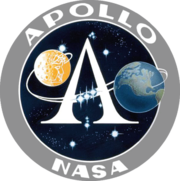Saturn I SA-3
| End of mission | |
|---|---|

|
SA-3 (Apollo) was the third flight Saturn I launch vehicle, the second flight of Project Highwater and was part of the Apollo Program.
Objectives
SA-3 continued the testing regime that had started with SA-1. Each mission had a slight difference from the last, testing another aspect of the system. For SA-3, the major difference from SA-1 and SA-2 was that for the first time the first stage would be fully loaded with propellants, instead of the 83% that was carried on the first two flights.
Also on the agenda for this flight was a test of the retrorockets that fired to separate the first and second stages during a launch. On SA-3 these were not needed as the second stage was just a ballasted dummy. There were also other changes in the ability of the rocket to downlink data, as for the first time this was in a digital stream, vital for the future automatic checking process that would go on before future launches.
And as with SA-2, this flight was part of Project Highwater, in which the second stage was filled with 109,000 liters of water. An explosive charge was detonated that exploded the rocket, forming an artificial cloud.
Flight

The third development flight of the SA-3 was on 16 November, 1962. This was a tense time in the United States, as it was only a couple of weeks after the Cuban Missile Crisis. As such there were no outside visitors in the launch control center.
As this flight contained more fuel than the previous two rockets, the maximum height of the suborbital flight was 167 km, four minutes 53 seconds after launch. The extra fuel allowed the engineers at the Marshall Space Flight Center to see how the rocket reacted to a slower acceleration and longer burn time.
At the maximum height the charge was detonated, exploding the rocket. This happened correctly but poor telemetry made the results questionable.

